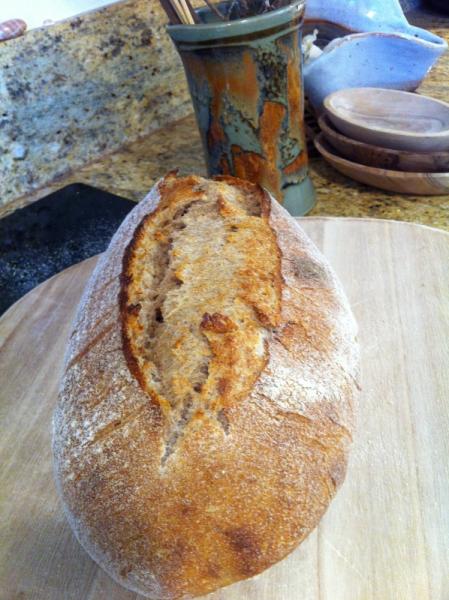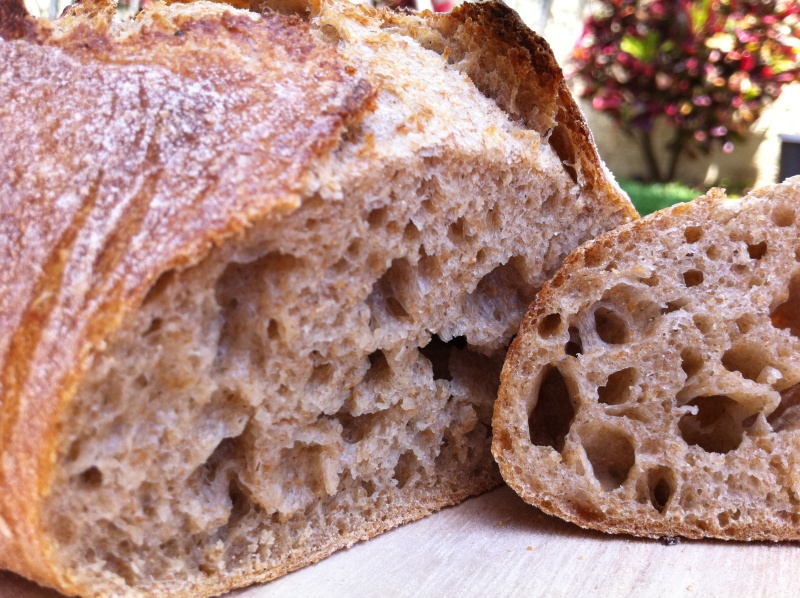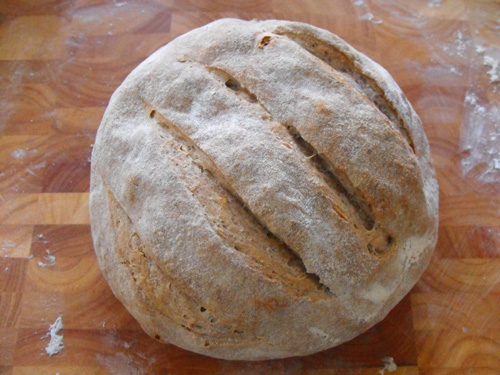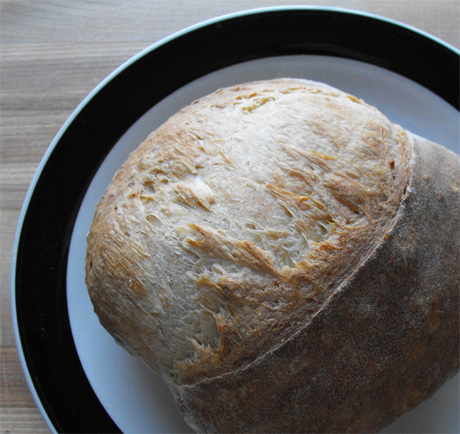Hi all,
I am new here and this is my first post on The Fresh Loaf!
Today I would like to share my first attempt at baking Sourdough Boule with Japanese Clay Pot.

Japanese Clay Pot (a.k.a. Donabe) is a symbol of comfort food for Japanese people.
(Oh, by the way, I am Japanese :-))
Family members or friends come together around the table and share a meal out of one pot, so that you can build a sense of closeness, warmness...
I live in Santa Monica, California and my all family members live in Japan...Therefore, I felt all warm inside when I happened to find this Donabe.
"I want to bake BREAD with this clay pot!"
This idea just popped in my head :-)
The best part of using a clay pot (of course, a cast-iron pan, too) is you don't need to create the steam in your oven.
Because a closed clay pot trap all of the moisture from the dough, and that creates STEAM you need to get a perfect crust!
It's like a "masonry oven" inside your oven, if you will.

Ok, let's bake Donabe-bread!
This is a Sourdough Boule made with 36 hours fermentation.
————————————
Sourdough Boule
Makes 1 small loaf
Submitting this post to YeastSpotting
————————————
Recipe
225 g Bread flour
162 g water
4 g Salt
67.5 g 60% Firm sourdough starter
————————————
Formula
266.3 g Bread Flour (100%)
188.3 g Water (70%)
4.8 g Salt (1.8% )
————————————
Directions
1. Making the preferment dough --- In a mixing bowl, combine Bread Flour, Water and Sourdough seed starter / culture.
Let it preferment at room temperature for 12 hours.
2. Meanwhile, mix flour and water, cover it with plastic and Autolyse for for 12 hours.
3. Next day, mix starter into the dough and slap & fold for 1 minute.
4. Add salt and slap & fold for 1 minute or until the dough becomes a rough ball.
5. Let it rest for 30 minutes.
6. 1 set Stretch & Fold (1 set = right over left, left over right, bottom over top, top over bottom)
7. Let it rest for 30 minutes.
8. 1 set Stretch & Fold
9. Let it rest for 30 minutes.
10. 1 set Stretch & Fold
11. At a cooler place, let it rise until the dough just starts showing the yeast activity, about a third in size.
12. Put it in the fridge for 18-24 hours.
13. Pull it out of the fridge and leave it out for 1 hour.
14. Pre-shape the dough and let it rest for 15 minutes.
15. Shape into Boule and place into a mixing bowl lined with well-floured tea towel, seam-side up.
❉ Since I didn't have a round banneton, I used a mixing bowl lined with a tea towel and it just worked very well!
16. Final fermentation for 60 - 90 minutes.
17. 1 hour before you plan to bake, place your Donabe / Closed clay pot (must be completely DRY) on the middle shelf in the oven and preheat to 500°F.

18. Flip the bowl over so that the dough sits on the middle of a parchment paper.
19. Score the top of the Boule using a lame or a sharp, serrated knife.
20. Very very carefully open the lid (it's HOT!) and put the bread in the preheated Donabe, replace the lid and slip it back into the oven.
21. Turn the heat down to 480°F and bake the bread for 30 minutes with lid.
22. Turn the heat down to 450°F and bake for 10-15 minutes without lid.
23. Once the boule is nicely brown, turn the heat off and remove the boule from the Donabe and place directly on a rack in the oven for another 5-10 minutes.
24. Let them cool onto a rack.

Here is my first Donabe-Bread!

It turned out super nice! I got an amazing crust and silky-fluffy-holey crumb.
To be honest, I was quite surprised by this result.
Even though I knew this "closed clay pot (La Cloche)" method through this post on a website BREAD IN FIVE,
I was not sure if I could get the same result with this Japanese Donabe or not...
No baking stone? No steam? Really?!

Yes, it really works! Donabe-bread is a new comfort food for me!
Yuko


























